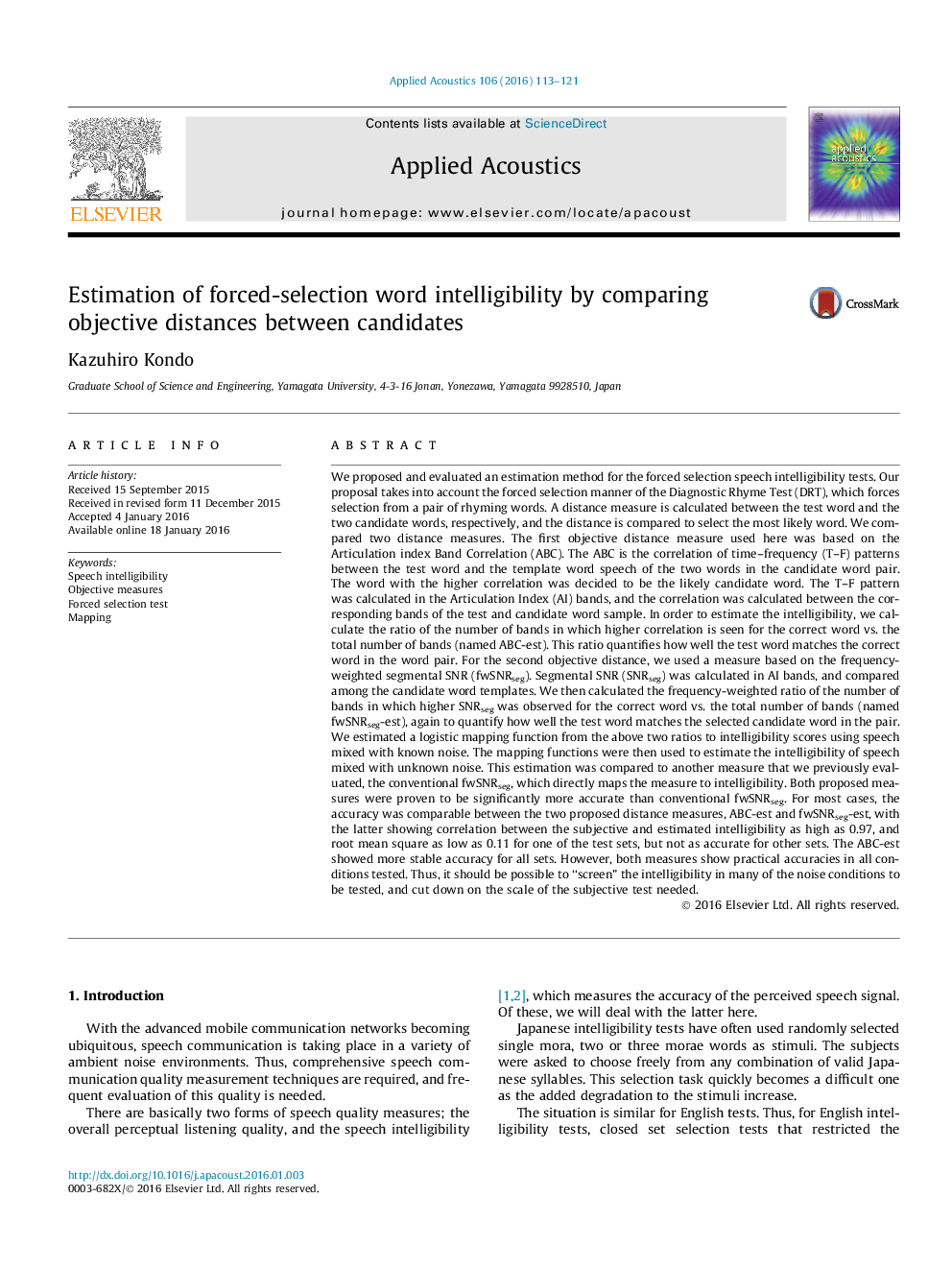| Article ID | Journal | Published Year | Pages | File Type |
|---|---|---|---|---|
| 754172 | Applied Acoustics | 2016 | 9 Pages |
Abstract
We proposed and evaluated an estimation method for the forced selection speech intelligibility tests. Our proposal takes into account the forced selection manner of the Diagnostic Rhyme Test (DRT), which forces selection from a pair of rhyming words. A distance measure is calculated between the test word and the two candidate words, respectively, and the distance is compared to select the most likely word. We compared two distance measures. The first objective distance measure used here was based on the Articulation index Band Correlation (ABC). The ABC is the correlation of time-frequency (T-F) patterns between the test word and the template word speech of the two words in the candidate word pair. The word with the higher correlation was decided to be the likely candidate word. The T-F pattern was calculated in the Articulation Index (AI) bands, and the correlation was calculated between the corresponding bands of the test and candidate word sample. In order to estimate the intelligibility, we calculate the ratio of the number of bands in which higher correlation is seen for the correct word vs. the total number of bands (named ABC-est). This ratio quantifies how well the test word matches the correct word in the word pair. For the second objective distance, we used a measure based on the frequency-weighted segmental SNR (fwSNRseg). Segmental SNR (SNRseg) was calculated in AI bands, and compared among the candidate word templates. We then calculated the frequency-weighted ratio of the number of bands in which higher SNRseg was observed for the correct word vs. the total number of bands (named fwSNRseg-est), again to quantify how well the test word matches the selected candidate word in the pair. We estimated a logistic mapping function from the above two ratios to intelligibility scores using speech mixed with known noise. The mapping functions were then used to estimate the intelligibility of speech mixed with unknown noise. This estimation was compared to another measure that we previously evaluated, the conventional fwSNRseg, which directly maps the measure to intelligibility. Both proposed measures were proven to be significantly more accurate than conventional fwSNRseg. For most cases, the accuracy was comparable between the two proposed distance measures, ABC-est and fwSNRseg-est, with the latter showing correlation between the subjective and estimated intelligibility as high as 0.97, and root mean square as low as 0.11 for one of the test sets, but not as accurate for other sets. The ABC-est showed more stable accuracy for all sets. However, both measures show practical accuracies in all conditions tested. Thus, it should be possible to “screen” the intelligibility in many of the noise conditions to be tested, and cut down on the scale of the subjective test needed.
Related Topics
Physical Sciences and Engineering
Engineering
Mechanical Engineering
Authors
Kazuhiro Kondo,
